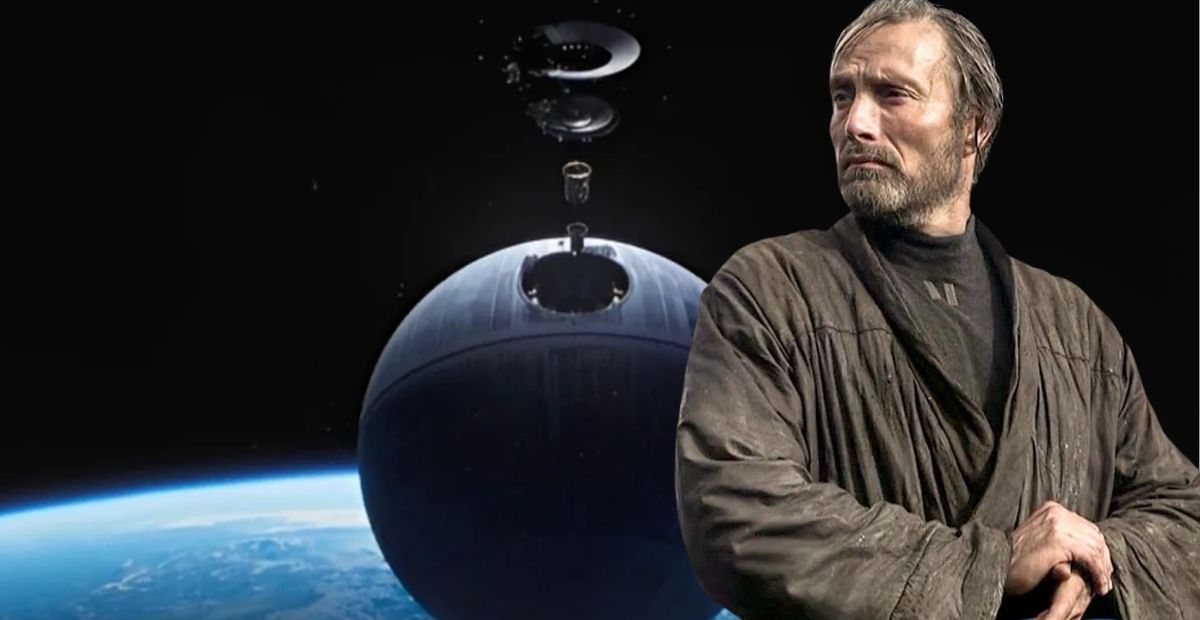This question has been floating around the Star Wars community ever since Rogue One came out. Back in Attack of the Clones, we saw that the Geonosians were the ones who designed the Death Star. But in Rogue One, we learned that Galen Erso was the only one who could actually make it work, specifically, the only one who could turn the concept into a fully functional superweapon with its devastating superlaser.
So what happened in between?
Why didn’t the original Geonosian Death Star design work? And why did the Empire need Galen Erso to step in and redesign it from the inside out?
The Geonosian Base Was Just a Skeleton
The first thing we have to understand is that the Geonosians didn’t hand over a fully functional Death Star blueprint—they gave the Empire a concept. Under Archduke Poggle the Lesser, the Geonosians drafted the original schematics during the Clone Wars, but it was more of a rough vision than an engineered weapon.
They designed the massive spherical frame, the equatorial trench, and the basic structure. But they didn’t know how to actually build it, power it, or make its superlaser work. It was just a skeleton.
Even Star Wars’ official databank on the Death Star confirms this:
“The Death Star began as a Geonosian design, but became operational after nearly two decades of work by a team of brilliant scientists sequestered on the rainswept world of Eadu.”
That team, led by Galen Erso, is the one who turned the Geonosian dream into a working nightmare.
Enter Galen Erso, Whose Mastery of Kyber Crystals Made the Death Star Possible
Galen Erso wasn’t just any engineer—he was the galaxy’s leading expert on Kyber crystals, the same crystals that powered Jedi lightsabers. According to Catalyst: A Rogue One Novel, he was considered “One of the Core’s most renowned polymaths” and “the preeminent authority on crystals and their use in supplying enhanced power.” His early work focused on using Kyber energy to generate clean, sustainable power for entire planets. But that same research was secretly redirected by the Empire to weaponize the crystals, eventually leading to the Death Star’s superlaser.

In the book, we learn that Galen understood Kyber crystals in a way nobody else could. He explained, “The Kyber will submit to pressure up to a certain point before the output becomes impossible to harness. Untamable.” This deep understanding allowed him to do what no other Imperial scientist could solve the unstable energy output and make the weapon functional.

Orson Krennic’s own team had struggled with the problem for years, until Galen’s manipulation of altered Kyber crystals finally “amplified [the] power yield beyond expectations.”

And the Death Star wasn’t just focusing energy, it was fueling its weapon with Kyber. The novel confirms that the crystals were “drained of their inherent power” during each firing, meaning they were literally consumed by the weapon’s destructive process. Galen’s ability to tap into that kind of power, stabilize it, and build it into a superweapon made him essential to completing the project.
That’s likely why the Geonosians could never get the Death Star operational in the first place. They may have designed the structure, but they didn’t have the scientific understanding, especially when it came to Kyber crystals. Without someone like Galen Erso, who truly understood the unpredictable and volatile nature of those crystals, the Death Star’s core weapon system would’ve remained just a dangerous idea on paper.

